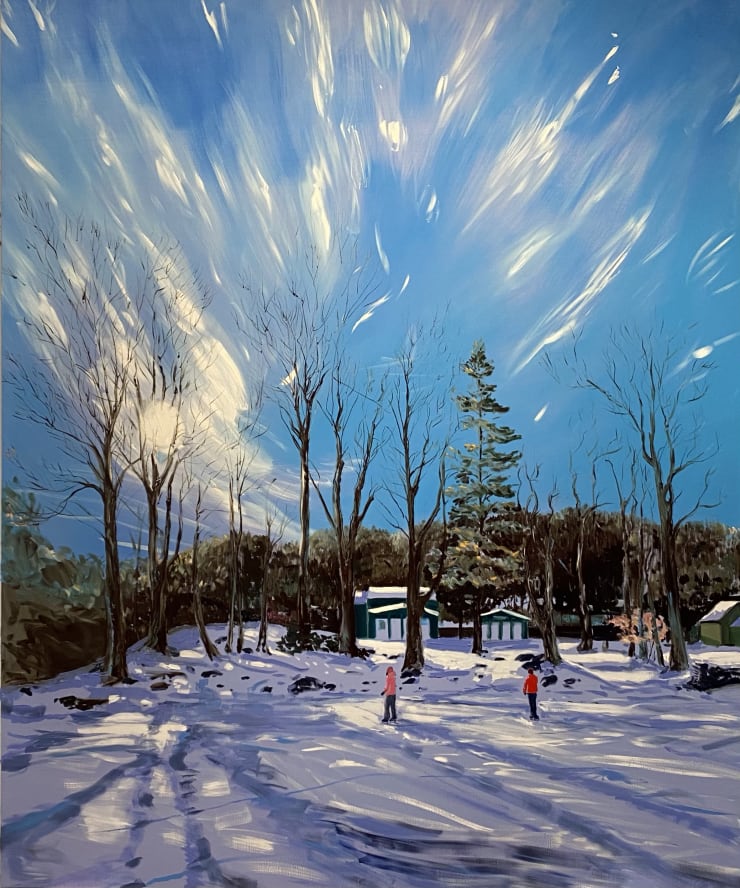-
A YEAR ON MAGNOLIA ROAD
BY SEBASTIAN BLANCK -
Using vibrant colors to craft familiar outdoor scenes, Sebastian Blanck captures
fleeting yet touching moments in life.
-
Blanck paints compelling scenes that express small, intimate, moments of life. His works on canvas range from depicting vivid portraits of loved ones and children at play, to also capturing quotidian experiences in bright, saturated colors. His black and white ink on paper works, invite the viewer to step into his cherished world. Often touching and emotional in spirit, Blanck’s work displays both a familiarity with each subject and a commitment to connecting individuals through the power of nostalgic, bold imagery.
-
Like the Impressionists before him, Blanck challenges the viewer to stand still
and lose oneself in the narratives through strong lines, vibrant color, and playful composition. Blanck’s paintings are an expression of the feelings that connect us with one another. Working from photographs, he has tasked himself to making a painting a day. This structure allows him to work quickly and intuitively without giving way to overworked canvases butreveling in the unintended mistakes and possibilities.
-
This exhibition pairs black and white works on paper pen and ink with large-scale oil paintings in the form of broad perspective seasonal vignettes that evoke the solitary nature of passing time. Time is “I think nostalgia now has such a different [meaning]—it means the same thing, but in a much different, and more potent and positive [way] than it was. Even last year, we said “oh, sepia tones are nostalgic,” where now everybody has nostalgia for something, because the whole way the world is functioning is so different.” We experience changing seasons and an unmistakable confidence blossoming in the hand of the artist along with the inimitable magnolia.
-
-
Blanck received his BFA from Rhode Island School of Design. In the late 1990’s he worked as an assistant for American figurate artist, Alex Katz. Although influenced by Katz, Blanck’s work varies greatly due to the intimacy of his subjects and the evidence of his hand in the work.
-

© 2025 Maya Frodeman Gallery
MAYA FRODEMAN GALLERY
66 South Glenwood Street Jackson Hole, Wyoming 83001
TEL (307) 733-0555 | info@mayafrodemangallery.com
Instagram, opens in a new tab.
Artsy, opens in a new tab.
Join the mailing list
Send an email
This website uses cookies
This site uses cookies to help make it more useful to you. Please contact us to find out more about our Cookie Policy.
Join our mailing list
* denotes required fields
We will process the personal data you have supplied in accordance with our privacy policy (available on request). You can unsubscribe or change your preferences at any time by clicking the link in our emails.















